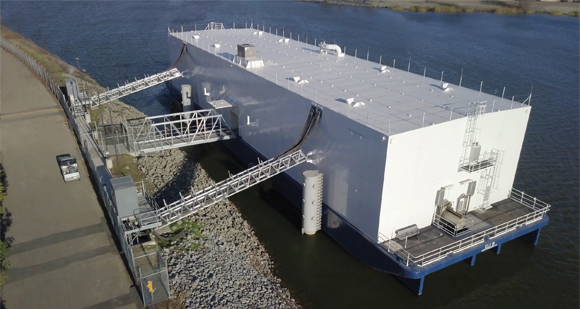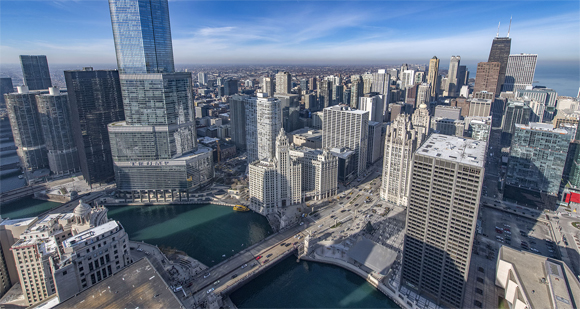|
  
|
FROM SITE SELECTION
MAGAZINE, SEPTEMBER 2021 ISSUE
|
 |
CALIFORNIA
Poaching companies? California draws the line and ups the ante.
|
|
|
|
 |
INVESTMENT PROFILE: SAN JOAQUIN COUNTY, CALIFORNIA
IT initiatives underway around the region — including a unique data
center — are adding to the arsenal of San Joaquin County’s business
advantages.
|
|
  |
Northern Ireland
Atlanta-based labor, employment and business immigration law firm
Ogletree Deakins last week announced a multi-year partnership with
Invest Northern Ireland to establish a Global Solutions Center in
Belfast. Paralegals at the center will work in tandem with the firm’s
U.S.-based Immigration Practice Group to handle H-1B visas and PERM
labor certifications, among other work for high-volume business
immigration clients.With more than 100 full-time immigration attorneys,
200 paralegals and more than 100 additional support professionals,
Ogletree Deakins’ global mobility practice is one of the largest
business immigration practices in the U.S., and has seen revenue grow by
nearly 60% in the last five years. Earlier this year, the firm announced
a global alliance with KPMG Law in Germany to provide businesses with
global workforce solutions. Ten years ago this month, Site Selection
documented the site selection process of London-based global law firm
Allen & Overy for a new shared services center in Belfast. That
operation and others in the field have been expanding in Belfast as
Brexit in order to help business navigate Brexit, among other
motivations.
Mexico
As reported by Mexico Now early this month, electronics and electrical
part designer and manufacturer TE Connectivity, which already operates
two plants in the border city of Juarez, plans to open a third facility
in the southeastern part of the city by the first quarter of 2022. The
company says its products “connect and protect the flow of data, power,
and signal – in electric vehicles and aircraft, digital factories and
smart homes, and life-saving medical devices, efficient utility
networks, and the global communications infrastructure.” The
Switzerland-based company makes 192 billion products annually, saw 2020
sales of $12.2 billion, employs 80,000 people and operates more than 100
global engineering and manufacturing centers.
|
|
  |
|
ILLINOIS INVESTMENT
GUIDE 2021/22
|

|
DCEO Q&A
Sylvia Garcia, acting director of the Illinois Department of Commerce
and Economic Opportunity, talks with Conway Custom Content Managing
Editor Savannah King Yawn about the state’s invaluable strengths for
growing businesses.
|
|
 |
INDUSTRY DIVERSITY
From food to pharmaceuticals, Illinois is home to a broad array of
industries.
|
|
 |
SUSTAINABILITY & ENERGY
A large and growing EV industry charges the Illinois economy.
|
|
|
SITE SELECTION
RECOMMENDS
|
|
By now you may have read a handful of commentaries and a barrel full of
social media comments about the U.S. Department of Energy’s solar power
plans released last week. We always think it’s good to go to the source first. Among other findings,
the Solar Futures Study prepared by DOE’s National Renewable Energy
Laboratory and released last Wednesday projects that by 2035, “solar
energy has the potential to power 40% of the nation’s electricity, drive
deep decarbonization of the grid, and employ as much as 1.5 million
people—without raising electricity prices.”
“Ramping up solar this dramatically is possible, but it will call for
supportive policies and robust investments in solar generation, the
transmission grid and relevant technologies,” says Brian Murray, interim
director of the Nicholas Institute for Environmental Policy Solutions
and director of the Duke University Energy Initiative. “This is what it
will take to further drive down the price of solar and ensure we can
move electricity from where it is most cost-effectively generated to
where it is used.”
|

|
|

|
Last Friday, luminaries including building owner Joe Mansueto, founder
and Chairman of Morningstar, Inc. and owner of the Chicago Fire MLS
team, and veteran Chicago newsman Bill Kurtis gathered to commemorate
the 100th anniversary of the Wrigley Building. These photos taken nearly
a century apart show just how groundbreaking the structure was in 1921
along a newly widened Michigan Avenue that was part of the grand vision
of Burnham and Bennett’s 1909 Plan of Chicago. Today the building’s
tenants across its 502,000 rentable square feet include Perkins + Will,
medical technology firm Brainlab, the Nature Conservancy and Mid-America
Real Estate Group.
Designed by Graham, Anderson, Probst & White, the Wrigley Building’s
exterior includes 250,000 terra cotta tiles in six shades of white —
“off white at the base and blue white at the top so the building looks
brighter as it rises,” explains the
building’s home page maintained by commercial real estate firm
Zeller. The clock tower is patterned after La Giralda, the bell tower of
the Seville Cathedral in Seville, Spain. “After it opened, the
temple-like cupola on the 26th floor of The Wrigley Building served as a
vantage point for viewing the city in 360 degrees as it rapidly
expanded,” the firm explains. “The five-cent admission price included a
stick of Wrigley gum. (The Wrigley Building offices still keep Wrigley
gum on hand for visitors.)” No wonder one early observer dubbed the
Wrigley Building a “Tribute to the Power of Human Jaws.”
|

|
|
|
|

